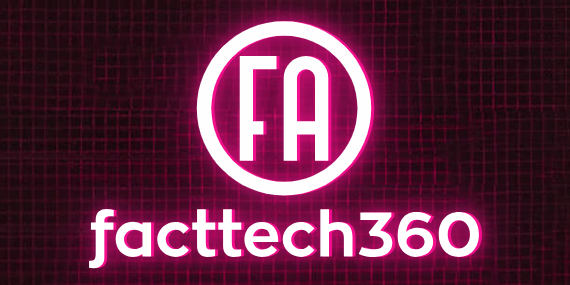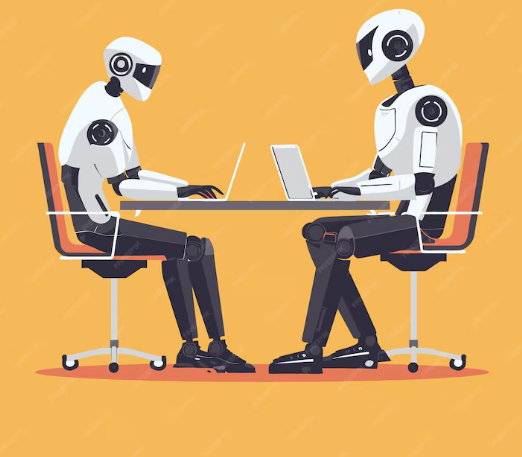Threat or Opportunity in Employment for AI vs. Employment
Lets understand AI vs. Employment: Threats or Opportunities so Artificial intelligence (AI) is revolutionizing industries, economies, and societies at an incomparable speed. Employment is one of the biggest areas that this technology has revolutionized. The more AI advances push to perform, the more they could put middle-class jobs at risk. This article will discuss how AI vs. Employment is changing jobs, the risks of jobs being lost, and jobs being created, the potential workforce adaptations and the future of work.
Job Displacement Environment
Automation and Job Losses
Perhaps the first and most tangible effect of AI vs. Employment related on jobs is automation of routine tasks. We have come to a point where automation powered by AI and robotics can perform many jobs that humans are currently doing. As automation increases across the sectors including manufacturing, retail and customer service, there have been fears that more widespread unemployment would follow. For example, self-checkouts in supermarkets as well as automated customer service bots have eliminated cashier jobs and the work of support staff who could easily be replaced by other forms of automation.
Vulnerable Job Sectors
Some sectors and some categories of employment are indeed more open to automation than others. Most of the jobs at risk are in routines where the tasks are repetitive and predictable. AI vs. Employment can handle better and cheaper tasks than humans, manufacturing, data entry, and basic admin works are main examples. Autonomous vehicles could also transform the transportation industry by taking the place of drivers of delivery services, taxis, and trucks in the future it is very important to understand how impact AI vs. Employment.
Socioeconomic Impacts
Significant job displacement could have important socioeconomic implications. This disproportionately impacts workers in low-skilled, low-wage jobs, worsening issues around inequality and social mobility. This job loss can result in higher unemployment rates, lower consumer spending, and economic instability. Not to mention the psychological effects of being laid off, which often results in significant stress and poor self-esteem.
Creating New Opportunities
New Job Categories
Although AI is endangering some jobs, it is also creating new kinds of jobs. There are those who maintain and oversee these AI systems that require specialized skills to both develop and maintain/support the models. AI research, data science, machine learning engineering, and AI ethics are among thriving job areas. These include developing algorithms, processing extensive data, and guaranteeing AI acts ethically and without prejudice.
Augmentation of Human Work
However, In AI vs. Employment is not able to replace human service currently, but rather to enhance it. In several sectors, AI systems can help employees by taking on some of the simpler, day-to-day elements of their roles, freeing up them up to concentrate on more complicated and creative parts. For instance, within healthcare, AI can interpret medical images to identify anomalies and prepare radiologists for more time on patient care and more complex diagnostics. AI applications for finance, which can be used to automate repetitive data analysis, could allow analysts to focus on operationalizing high-level insights.
Towards Increased Productivity and Creativity
Enabling teams to empower AI to change the world- AI can yield much needed productivity and innovation. Automation of redundant tasks equips organizations to function more efficiently, save cost, and manage tasks that provide real value with better use of resources. This increase productivity makes a business more competitive, and may result in creation of new business models, services, or products, leading to economic growth. Additionally, innovation can lead to the creation of whole new industries powered by AI, which would generate new types of jobs.
Efforts for Workforce Adaptation

Continuing Education and Skill Development
To mitigate the potential threat of job displacement, governments and businesses will need to foster a culture of lifelong learning and work to match newly displaced workers with opportunities to acquire needed new skills. Harnessing AI augmented workplaces will require some level of the human skills to enable the workers to reckon in such an environment. Accessible and low-cost training programs have to be made available to the people by governments, institutions as well as private companies. This is an echo of how important STEM (Science, Technology, Engineering, and Mathematics) education is, but it also calls attention to soft skills like creativity, critical thinking, and emotional intelligence.
Reskilling and Upskilling
Programs of reskilling and upskilling are essential for those workers whose employability is at risk due to automation. Reskilling means providing people with entirely new skills so that they can move into different job roles, whereas upskilling means improving the existing skills of people to work with new technologies. One characteristic would be the reskilling of a displaced factory worker to repair AI systems, or the upskilling of that factory worker to control advanced robotic systems. These especially in transport and logistics could be funded through public-private partnerships.
Proactive Policies and Social Floor
What policymakers can do here is bring supportive measures for workers who transits between different jobs due to changes driven by AI. These social safety nets in the form of unemployment benefits, healthcare, and job-placement services offer a temporary respite and assistance. Second, policies that encourage job creation in such new sectors and support business investments into human capital can offset the adverse effects of AI on employment. Governments may also consider implementing certain policy measures to encourage companies to adopt AI in a manner that is ethical and socially responsible, and to actually reduce potential social harms.
The Future of Work
Human-AI Collaboration
A greater partnership between people and AI systems will shape the future of work. Instead of AI becoming the Defector alternative for human effort, it should seen as a strength that human beings can use, IDEALLY. Collaborative robots that automate repetitive work on the manufacturing line next to human workers, AI-fueled software that supports decision-making, and AI-powered, frictionless AI tools that help us organize our daily life. This means that it can create more enjoyable and productive places to work.
Gig Economy / Remote Working
AI is changing the staffing model as well, driving the rise of the gig economy and the shift to remote work. More and more platforms are using AI to match freelancers with the tasks they want. These platforms are providing flexibility and autonomy to workers and aligning projects with workers’ unique skills and interests. And remote work, which AI-enabled communication and remote collaboration tools are rapidly transforming into the norm, provides employees with flexibility and work-life balance too.
Towards Ethical and Inclusive AI
It is also crucial to ensure that AI, as it shapes the future of work, is developed ethically and inclusively. Having AI systems that are free from bias, discrimination or misdeeds is mandatory. To be achieved, this requires diverse teams of developers, transparent algorithms, and monitoring and evaluation. Making AI development inclusive largely means being creative about who gets to benefit and who is harmed the most by AI.
Conclusion
As we discuss about AI vs. Employment so AI is definitely changing the employment landscape and as such poses a great danger to some while it also offers large benefits to others. Although there is a real chance of job displacement, especially in routine and less skilled jobs, the possibility of job creation in new and existing sectors indicates that the future may be a better time. To do so, we need to adopt lifelong learning, reskilling and upskilling enterprises that are facilitated by policies, instead of assuming either utopian or catastrophic scenarios for human-AI collaboration.
The way AI vs. Employment we implement AI into our economies and societies will determine the future of work. The key to this is to focus on meaningful, social inclusion-driven development, invest in our human capital, and develop a culture of adaptability and innovation to facilitate a new kind of beneficial, innovative, and equitable workforce for all.
What skills are most valuable in an AI-driven job market?
There are technical skills that are valuable for the future job market (related to AI and data science): programming, machine learning, data analysis etc. Soft skills such as creativity, problem solving, critical thinking, emotional intelligence, and the capability to work alongside AI systems are of equal importance.
How can companies ensure ethical use of AI in employment practices?
Companies can practice ethical AI development by deploying AI systems that are explainable, by establishing audit trails that enable the detection and correction of bias, by increasing diversity of employees working on AI, by sticking to legal and ethical standards that are in place, and by fostering organizational values that value fairness and inclusivity.


[…] better with practice and knowledge. Through a solid grounding in fundamental and we can also use Artificial intelligence (AI) tool for technical analysis skills, knowledge of market context, and the use of prudent […]
[…] altered to create hyper-realistic content. Deepfakes Works – Deepfakes technology utilises artificial intelligence (AI) and machine learning (ML) in particular, deepfakes uses a subset known as Generative Adversarial […]